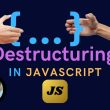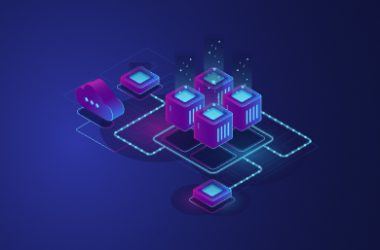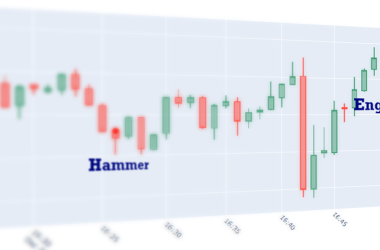No one can argue that non-fungible tokens and metaverse are revolutionary technologies. When you combine them, you can create a totally new way to deal with digital objects and virtual economies—the metaverse NFT marketplace.
This guide walks you through the basics of setting up one of these marketplaces, from what the metaverse is all about and how non-fungible tokens work to the actual steps to get your platform off the ground.
Understanding the Metaverse
The metaverse is a virtual space where physical reality and cyber worlds come together. It can be of different types (for example, industrial metaverse) but always uses technologies like VR, AR, and blockchain to give users an experience as if they were in the real world.
Within this cyber reality, people can interact with each other and their surroundings in real time.
What Are NFTs?
NFTs, short for non-fungible tokens, are special computerized certificates verified using decentralized technology. Unlike cryptocurrencies like Bitcoin or Ethereum, which can be exchanged one-to-one, tokens can’t be traded equally.
Each object has its own special ID and information, making it one of a kind. These tokens can represent all sorts of digitized items, from art and music to videos, property, and beyond.
Why Build an NFT Marketplace in the Virtual Universe?
Creating a marketplace is a great opportunity for businesses, creators, and developers to tap into the growing online world.
First things first, the metaverse is a space where people spend real money. By creating your own solution, you can provide a platform to buy, sell, and trade digital items, making money from transaction fees, listing fees, and special features.
Another advantage of starting customized metaverse NFT development is that it can position your business at the fore of a decentralized boom.
The token market has grown to tremendous size, with billions of dollars in sales. Being an early player allows you to establish a strong presence and build a loyal user base.
Lastly, NFT services hide lots of opportunities. They can represent various cyber and physical items, which opens up many possibilities for creativity and caters to diverse user appeals.
Key Features of Your Software Should Have
Building a successful application means including key features that make it easy to use, safe, and fun. Here are the main things to think about:
Smart Contracts
Smart contracts automate all the operations that happen on the blockchain. For example, they handle the creation, transfer, and ownership of rare items, as well as creators’ royalties.
Wallet Integration
Cryptocurrency wallets allow people to store, manage, and trade their non-fungible objects.
Search and Filter Options
Advanced search and filter options help users find exclusive items. They may include features like keyword search, category filters, and sorting options by price or popularity.
Royalties and Rewards
Royalty and rewards systems allow creators to earn money from resales, activate people, and ignite their interest.
Auction and Bidding System
An auction and bidding system makes your platform more exciting. Users can bid on tokens, drive higher prices, and increase engagement.
Analytics and Reporting
Analytics tools provide insights into user behavior and sales trends, helping you make better decisions to update the platform.
Step-by-Step Guide to Making a Marketplace
Metaverse NFT marketplace development is a complex process that involves several phases, from initial planning to launching and maintaining. Here’s a simplified guide to help you through:
Market Research and Planning
Begin by researching the markets. Understand what users want and study your competition. Create a detailed business plan outlining your goals, how you’ll stand out, and how you’ll earn money.
Choosing the Right Blockchain Network
Choose a distributed network that fits your needs, such as Ethereum or Binance Smart Chain. Consider factors like speed, price, and ability to extend to ensure your application runs well.
Designing the Screens
Design an easy-to-use interface that looks great and is simple to navigate. Think about adding virtual reality (VR) or augmented reality (AR) elements to enrich the user experience.
Creating Smart Contract
Create smart contracts to automate transactions. Test them out to confirm they work flawlessly.
Integrating Wallets and Payment Gateways
Integrate various cryptocurrency wallets to enable transactions. Popular options include MetaMask, Trust Wallet, and Coinbase Wallet.
Frontend and Backend Development
Build the front end and back end of your software. The front end should offer an engaging user experience, while the back end should easily manage data and transactions.
Testing and Quality Assurance
Conduct thorough testing to pinpoint and resolve any bugs. Perform different tests to ensure the platform is capable of handling high traffic volumes.
Launching the Product
Once testing is complete, launch your software. Plan a marketing campaign to promote the launch. Use social media, email marketing, and partnerships with influencers to generate buzz and attract people.
Challenges and Solutions
Of course, making your own platform comes with its challenges. You need to make sure your software can grow, keep it safe from cyber threats, attract those who might be new to tokens and blockchain, follow changing rules, protect intellectual property, and consider the environmental impact of distributed networks.
Though they may make you feel frustrated, handling them is a must. Some possible solutions include using scalable and eco-friendly blockchains, improving security, and working with dependable software development experts, such as SCAND.
By handling these troubles, you can create a successful solution that meets user needs and adapts to industry changes.
Future Trends and Opportunities
In the future, emerging technologies are going to get really exciting. Non-fungibles will be able to move easily between different blockchains, making trading a breeze.
VR and AR will let users interact with their cyber stuff in super immersive ways, totally changing how we see digital art, gaming, and more.
AI and ML will boost security by analyzing user behavior, and DeFi will bring new ways to earn money with online assets, like using them for loans or trading without a middleman.
Overall, these trends will make digital objects more useful and popular, focusing on what users want and how tech can improve their perception.
Conclusion
Building a metaverse NFT marketplace is challenging yet fulfilling. By grasping all the ins and outs of both concepts, you can create an incredible product, tackle challenges head-on, and open up new possibilities to succeed.
If you’re looking for a blockchain development service provider, get in touch with us today to start transforming your ideas into reality.
The post Metaverse NFT Marketplace Development: Your Guide appeared first on SCAND.








